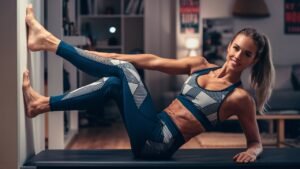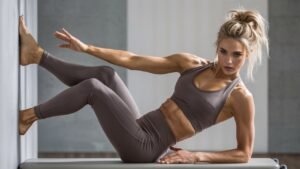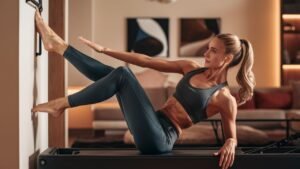Introduction to Pilates and Its Benefits
Pilates, a mind-body exercise system developed in the early 20th century by Joseph Pilates, focuses on controlled movements, core strength, and flexibility. Originally called “Contrology,” Pilates emphasizes the balanced development of the body through core strength, flexibility, and awareness, which supports efficient, graceful movement. Over the decades, it has evolved into a popular fitness regimen practiced by millions worldwide.
The foundational principles of Pilates include concentration, control, center, flow, precision, and breathing. These principles ensure that each exercise is performed with the utmost attention to form and alignment, fostering a deeper connection between the mind and body. A key benefit of Pilates is its ability to improve core strength, which supports better posture and reduces the risk of back pain. Additionally, Pilates enhances flexibility, muscle tone, and joint mobility, making it an excellent workout option for individuals of all ages and fitness levels.
Beyond the physical advantages, Pilates also offers significant mental health benefits. The focus on controlled breathing and mindful movement can help reduce stress, improve concentration, and promote a sense of calm and well-being. This holistic approach makes Pilates not just a workout, but a practice that nurtures both the body and mind.
One of the major attractions of Pilates is its adaptability. Whether you’re a beginner or an experienced practitioner, Pilates exercises can be easily modified to suit your fitness level and goals. For those looking to practice Pilates at home, minimal equipment is required. A good-quality mat, comfortable clothing, and perhaps a few small props like resistance bands or a Pilates ball can provide a comprehensive workout. Even with minimal equipment, Pilates can yield significant results, making it a convenient and effective option for home workouts.
Creating an Effective At-Home Pilates Routine
Establishing a successful Pilates routine at home begins with selecting a comfortable and quiet space for your workouts. Ideally, choose an area with sufficient room to move freely and enough ventilation to keep you cool. Ensuring that your workout space is distraction-free will help you maintain focus and achieve optimal results.
Next, gather the essential equipment needed for your Pilates practice. A high-quality mat is fundamental, providing the necessary support and cushioning for floor exercises. Additionally, resistance bands and small hand weights can enhance the intensity of various exercises, offering greater versatility and challenge. While not mandatory, items like a stability ball, Pilates ring, and foam roller can further enrich your routine and target different muscle groups.
A sample weekly workout plan can help structure your Pilates sessions effectively. Here is an example:
- Monday: Core-focused exercises (e.g., the Hundred, Roll-Up, and Plank)
- Tuesday: Lower body workouts (e.g., Leg Circles, Side Kicks, and Bridge)
- Wednesday: Upper body and posture (e.g., Arm Circles, Shoulder Bridge, and Swan)
- Thursday: Rest or light stretching
- Friday: Full-body integration (e.g., Series of Five, Teaser, and Swimming)
- Saturday: Flexibility and balance (e.g., Spine Stretch, Saw, and Standing Leg Swings)
- Sunday: Rest or gentle yoga for relaxation
Incorporating warm-ups and cool-downs is crucial for a safe and effective Pilates routine. Begin each session with dynamic stretches like Cat-Cow and Arm Circles to prepare your muscles and joints. Conclude with static stretches, such as Forward Fold and Child’s Pose, to aid in recovery and flexibility.
Maintaining motivation can be challenging but is essential for consistency. Set realistic goals, track your progress, and celebrate small achievements. Modify exercises to suit your fitness level or accommodate physical limitations, ensuring you remain engaged and challenged. Using variations or props can also keep your routine interesting and adaptable.
By following these guidelines, you can create a balanced and effective Pilates workout routine that supports your fitness goals and enhances overall well-being.




Leave a Comment